 40830
40830
The Moldavian language background
The Moldavian language is an Indo-European one, the basis of which were formed from the Thracian dialects located in South-Eastern Europe; it's closely related to the Proto-Latin (Proto-Italian) and Iranian languages. The Moldavian ancestors, the Getae and the Dacians, spoke a language similar to "Latin" long before the Roman Expansion to the Danube area. This is a hypothesis that we too tend to believe, the www.moldovenii.md project, it's regarding the existence of a close link between the Dacian and Latin languages, a fact that was suggested by many researchers in the XIX and XX centuries.
The similarities between the Moldavian and Latin languages can be explained trough:
- The fact that both have roots in the same local Proto-Indo-European substratum in South-Eastern Europe
- The fact that they originated from the same regional background (in the area of contact between the ancestors of the Thracians, Italians, Celts and Balto-Slavs);
- The linguistic loanwords that are present to this day can be explained by the interaction between different native speakers.
These are the hypotheses about the primacy of the Moldavian/Romanian languages over Latin, but such issues, are yet to be studied, and are still open to debate.
Along with the high degree of affinity between the Moldavian and Romanian languages there are some peculiarities of their development, listed below:
At the turning point of the I'st and II'nd millennium, the geographical position, historic circumstances, and the various influences from outside, predetermined some special conditions for development to our Danube and Eastern-Carpathian ancestors. On one hand, these conditions divided the South-Danube type of speech and the North-Danube one.
On the other hand, these are reasons that predetermined the appearance of distinctive speech features in the North of Danube: from the South of Carpathians, to the In-Carpathians plateau and especially to the East of the Carpathian Mountains.
Initial peculiarities marked out the South area (between the South Carpathians and Danube). Another North area covered the In-Carpathians plateau since the XII century, "it broadens to the East from the Carpathian Mountains to Dniester thus forming new preconditions for the future Moldavian dialect" (N. Raevskiy). This ethno linguistic reality was noted by Miron Costin who wrote in 1686 that ''the population of these places decreased because of the Tatar raids... they moved to Muramuresh, then from Vallachia to the Olt. After passing the mountains as time passed by, they lost their language too".
As the well-known linguists Al. Philippide, Al. Rosetti, V. Shishmarev, N. Corlateanu, N. Raevskiy and others proved, the process of East Carpathian land development by the Valachs' can be confirmed by toponymy data, "specific phonetic and morphological features of the Moldavian language" which were thoroughly studied by Moldavian philologist N. Raevsky.
Studies of L. Polevoy, P. Birni, N. Corlateanu, A. Eremiya and others in the sphere of historic geography, toponymy, directions of the Volokhs and the neighboring peoples migration; their conclusions based on the extensive documentary material confirms that "at the beginning of the XIV century, the Eastern-Carpathian population is coming to a new ethnic era of history -the Moldavian era".
As opposed to the previous ethnic eras which are less studied because of the absence of documentary data, in contradiction comes the Moldavian era which is well represented in different sources. We now have a sufficiently wide range of science literature where the essential parts of the local Eastern Carpathian population were documented for more than 6 centuries of their existence, including the: social-economic system, political system, culture, science etc.
For 650 years since the foundation of Moldova (1359), the language of the Eastern Carpathian community, developing in this region that was isolated from other national kindred, acquired specific features which are connected mainly with the preservation of old Moldavian words in the language, these words fully reproduced the sense of what was said and written.
În contextul lansării programului ”Satul European”, ce probleme vitale există în localitatea dumneavoastră?
- Statut:
- Sat
- Prima atestare:
- 1560
- Populația:
- 4823 locuitori
Brătuşeni este un sat şi comună din raionul Edineţ. Din componenţa comunei fac parte două localităţi: Brătuşeni şi Brătuşenii Noi. Satul Brătuşeni este aşezat în regiune de colină, situat la o distanță de 12 km de oraşul Edineţ şi la 190 km de Chișinău. La recensămîntul din anul 2004, populaţia satului constituia 4823 de oameni. Satul Brătuşeni din ţinutul Hotin este atestat pentru prima dată într-un document din 1560, cînd Alexandru Lăpuşneanu dăruia satul lui Bratăş şi fraţilor săi, Ion şi Simca.





 14 noiembrie - Calendarul celor mai importante evenimente din trecut și prezent
14 noiembrie - Calendarul celor mai importante evenimente din trecut și prezent 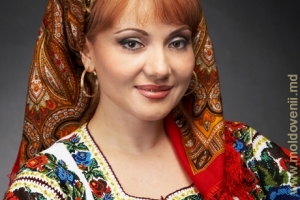 MELODIA ZILEI: Adriana Ochişanu - Ista-i moldoveanu'
MELODIA ZILEI: Adriana Ochişanu - Ista-i moldoveanu'  Sfinţii Cosma şi Damian doctori fără de arginţi
Sfinţii Cosma şi Damian doctori fără de arginţi  Moldografia: Lacul de acumulare pe rîul Camenca
Moldografia: Lacul de acumulare pe rîul Camenca  Victor Rusu-Ciobanu – 113 de ani de la naștere
Victor Rusu-Ciobanu – 113 de ani de la naștere  Omagiu lui Sandri Ion Şcurea
Omagiu lui Sandri Ion Şcurea  REŢETA ZILEI: Borş de tărîţe
REŢETA ZILEI: Borş de tărîţe 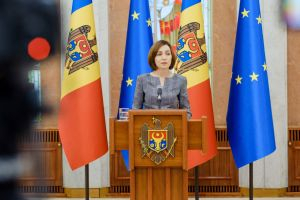 Sandu așteaptă partidele politice luni la Președinție
Sandu așteaptă partidele politice luni la Președinție  176 de ani de la naşterea scriitorului Zamfir Rally-Arbore
176 de ani de la naşterea scriitorului Zamfir Rally-Arbore  Pensiile în Moldova: Ce sistem de calcul există în țara noastră
Pensiile în Moldova: Ce sistem de calcul există în țara noastră  Retrospectiva civilizaţiilor antice
Retrospectiva civilizaţiilor antice 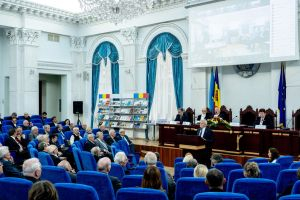 Mai mulți oameni de știință din Moldova au fost premiați
Mai mulți oameni de știință din Moldova au fost premiați  15 noiembrie - Calendarul celor mai importante evenimente din trecut și prezent
15 noiembrie - Calendarul celor mai importante evenimente din trecut și prezent 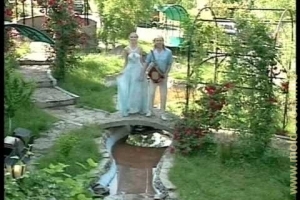 MELODIA ZILEI: Anatol şi Irina Bivol - Ileana și Constantin
MELODIA ZILEI: Anatol şi Irina Bivol - Ileana și Constantin 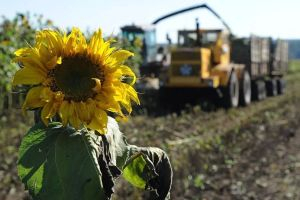 Loviți de secetă! Fermierii au obținut o recoltă mai mică de floarea-soarelui
Loviți de secetă! Fermierii au obținut o recoltă mai mică de floarea-soarelui  Moldografia: Clădirea conacului moșiei Vila Mîndîc
Moldografia: Clădirea conacului moșiei Vila Mîndîc  Persoanele cu maladii oncologice beneficiază mai rapid de investigații de înaltă…
Persoanele cu maladii oncologice beneficiază mai rapid de investigații de înaltă…  Adunarea ţării în Moldova la 582 de ani
Adunarea ţării în Moldova la 582 de ani  În municipiul Chișinău va fi inaugurat Centrul de Monitorizare a Traficului
În municipiul Chișinău va fi inaugurat Centrul de Monitorizare a Traficului  Marica Balan – o legendă a scenei
Marica Balan – o legendă a scenei 